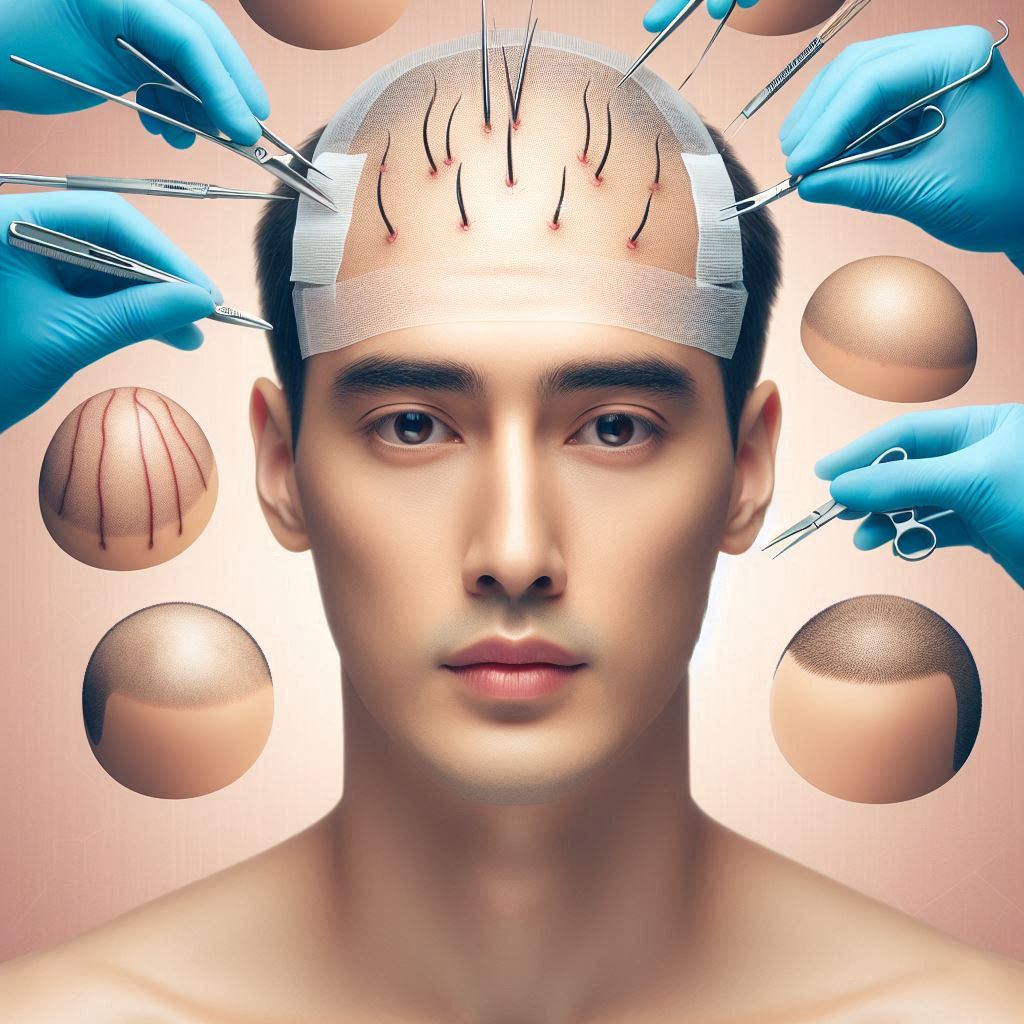
Comprehensive Guide to the Best Hair Transplant Techniques for Men
Hair loss is a common concern for men of all ages. While it’s often attributed to genetics, factors like stress, lifestyle, and medical conditions can also contribute to thinning hair or baldness. For those seeking a permanent solution, hair restoration is a leading choice. In this guide, we’ll delve into the best hair transplant techniques for men, their benefits, and considerations to help you make an informed decision.
Understanding Hair Transplantation
Hair transplantation is a surgical procedure that involves moving hair follicles from one part of the body (typically the back or sides of the scalp, known as the donor area) to areas experiencing hair loss (the recipient area). Modern techniques ensure natural-looking results and minimal downtime.
Best Hair Transplant Techniques for Men
1. Follicular Unit Extraction (FUE)
Overview: FUE is one of the most advanced and minimally invasive hair transplant methods. Individual hair follicles are extracted from the donor area using a micro-punch tool and transplanted to the recipient area.
Advantages:
- Minimally invasive with no linear scars.
- Faster recovery compared to older techniques.
- Suitable for small or large hair restoration needs.
Considerations:
- Requires a skilled surgeon for precision.
- Slightly more expensive than older methods.
2. Follicular Unit Transplantation (FUT)
Overview: FUT, also known as the strip method, involves removing a strip of scalp from the donor area, dissecting it into individual follicular units, and transplanting them to the recipient area.
Advantages:
- Suitable for extensive hair restoration.
- Offers high follicular yield.
Considerations:
- Leaves a linear scar in the donor area.
- Longer recovery time compared to FUE.
3. Direct Hair Implantation (DHI)
Overview: DHI is a variation of the FUE technique. Hair follicles are extracted and implanted simultaneously using a specialized tool.
Advantages:
- Precise placement for natural results.
- Reduced handling of grafts minimizes follicle damage.
Considerations:
- Requires a highly skilled surgeon.
- Higher cost compared to other methods.
4. Robotic Hair Transplantation
Overview: This method uses advanced robotic technology to assist in follicular extraction and transplantation.
Advantages:
- High precision in graft extraction and placement.
- Reduced human error.
Considerations:
- Limited availability of technology.
- Higher cost due to specialized equipment.
5. Scalp Micropigmentation (SMP)
Overview: While not a traditional transplant, SMP involves tattooing tiny dots on the scalp to mimic the appearance of hair follicles.
Advantages:
- Non-surgical and quick results.
- Ideal for those not suitable for transplants.
Considerations:
- Does not restore actual hair.
- Needs periodic touch-ups.
Factors to Consider Before Choosing a Hair Transplant Technique
- Extent of Hair Loss
- FUE and FUT are ideal for significant hair loss, while DHI works well for smaller areas.
- Scarring Tolerance
- FUE and DHI leave minimal scars, making them preferable for those who keep short hairstyles.
- Budget
- FUT is often more affordable, but newer techniques like DHI and robotic transplants are costlier.
- Surgeon’s Expertise
- The success of a hair transplant largely depends on the surgeon’s skill and experience.
- Recovery Time
- If you prefer minimal downtime, FUE and DHI are better options.
The Hair Transplant Process
- Initial Consultation
- Evaluation of hair loss pattern and scalp condition.
- Discussion of goals and the most suitable technique.
- Pre-Operative Preparation
- Avoid smoking, alcohol, and certain medications as instructed by the surgeon.
- Procedure
- Local anesthesia is administered to minimize discomfort.
- Hair follicles are harvested and implanted in the recipient area.
- Post-Operative Care
- Follow care instructions meticulously to ensure optimal results.
- Avoid strenuous activities and protect the scalp from direct sunlight.
Benefits of Hair Transplantation for Men
- Permanent Solution: Unlike temporary fixes, transplants offer long-lasting results.
- Natural Appearance: Modern techniques ensure the transplanted hair blends seamlessly with natural hair.
- Boosted Confidence: Restoring a full head of hair can significantly improve self-esteem.
- Low Maintenance: Once healed, transplanted hair requires no special care beyond regular grooming.
Potential Risks and How to Mitigate Them
While hair transplants are generally safe, potential risks include:
- Infection: Prevented with proper hygiene and post-operative care.
- Shock Loss: Temporary shedding of transplanted hair; regrowth occurs within months.
- Scarring: Minimized with techniques like FUE and DHI.
Choosing an experienced surgeon reduces the likelihood of complications.
FAQs
1. How long does it take to see results after a hair transplant?
It takes about 3-6 months for new hair growth to become noticeable. Full results are typically visible after 12-18 months.
2. Are hair transplants painful?
Local anesthesia is used during the procedure, so discomfort is minimal. Post-operative soreness may occur but subsides within a few days.
3. How do I choose the best hair transplant technique for me?
Your surgeon will recommend the most suitable technique based on your hair loss pattern, scalp condition, and personal preferences.
4. Are hair transplants suitable for all men?
Men with sufficient donor hair and no underlying medical conditions are ideal candidates.
5. Will the transplanted hair fall out?
Transplanted hair may shed initially (shock loss) but will regrow permanently.
6. Can hair transplants be repeated if needed?
Yes, additional sessions can be performed if more coverage is desired.
Conclusion
Hair transplantation has revolutionized the way men tackle hair loss, offering natural, long-lasting results. Techniques like FUE, FUT, and DHI cater to various needs, ensuring there’s an option for everyone. By consulting with an experienced surgeon and understanding the procedure, you can achieve a fuller, more youthful head of hair and regain your confidence.
Hair transplants are a personal journey, and with the right approach, they can transform not only your appearance but also your outlook on life.




